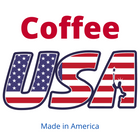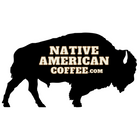All Day Gourmet Coffee – A New American Tradition
The American thirst for coffee was slow to develop since the majority of the early settlers preferred beer, cider, and tea. During the Revolutionary War, the Continental Army received a daily allowance of spruce beer or cider, but tea was still the non-alcoholic drink of choice.
However, during the War of 1812, the British blockade cut off the supply of tea, forcing Americans to turn to coffee. Although coffee houses began appearing in the larger cities, the United States was still predominately rural. Most coffee drinkers purchased green beans in bulk at general stores, then roasted, ground, and served the coffee at home.
During the 1830s a commercial roaster was imported from Europe to New York City. Within a few years, the commercial roasting of coffee in the urban areas was prospering and an industry was born. In 1860 the inexpensive paper bag came into use and a New York roaster began selling green coffee beans in one pound paper bags.
During the Civil War coffee consumption was reduced because of high prices. The government imposed a four-cent duty on imported beans that increased the price on green beans to an astronomical 42 cents a pound! Civil War soldiers, however, received a daily ration of coffee beans. Since green coffee beans have a very long shelf life when kept dry, Union soldiers preferred to carry green coffee beans.
Each company cook carried a portable coffee grinder, so the soldiers would roast the green beans over a fire and have them ground by the cook. Coffee was so important to soldiers that a model of the Sharps rifle was designed to hold a coffee mill in the bottom of the gunstock. Due to the Union blockade, the Confederate soldiers and civilians desperate for coffee used roasted sweet potatoes and Indian corn as coffee substitutes.
At the battle at Brandy Station, Lieutenant Henry Meyer was in the thick of the fighting. He escaped with his life only because a rebel's saber missed the Lieutenant and thrust into a two-quart pail hung on his saddle, splitting the pail in two. Meyer had borrowed the pail in the morning from a friend and when he related his good fortune to the owner of the pail his friend groused, "How do you suppose, I'm going to cook my coffee?"
Coffee Moves to the Forefront of Everyday American Life
After World War I coffee had become a staple of American life. Major coffee companies began intensive advertising on radio, which was able to reach rural and urban areas alike.
Even a huge electric sign designed by Norman Rockwell was placed in New York’s Times Square, portraying a Southern gentleman drinking coffee.
The Great Depression of the 1930's caused a drop in coffee consumption and was further affected by "soft" drinks that were entering the market. By the end of World War II, rationing had made the 5-cent cup of coffee all but disappear.
With their profits evaporating, high coffee prices and the growing popularity of "instant" coffees, coffee companies began using inferior Robusta coffee beans instead of the more savory Arabica beans to maintain their profits. Various other ploys were used by coffee companies to squeeze out more profits, including reducing the weights of coffee in cans, and "fluffing" the coffee to fill more space.
To this day, coffee roasters have continued to use lackluster Robusta coffee beans, "chaff" fillers, and other tactics to squeeze maximum profits from coffee. While these practices have been good to the large-scale coffee roasting industry, the individual consumer has not necessarily been the beneficiary of this downgrade in everyday quality.
That's why you really have to look long and hard to find a premium grade, high quality "every-day" coffee these days.
All Day Gourmet Coffee – All Day, Every Day
While it is always a pleasure to try specialty coffees from around the world from month to month, the role of an "All Day, Every Day" coffee should not be ignored.
I recommend the All Day Gourmet coffees from Coffee Wholesale USA over the other "national branded" coffees. Simply put, All Day Gourmet coffee is a gourmet oasis among a desert of mediocre coffee. All Day Gourmet coffee is 100% Arabica coffee beans – and this is evident from the smooth, flavorful brew that it makes.
All Day Gourmet coffee is available in two different roasts – Classic American Roast and Bolder Brew – both of which I drink regularly. The Classic American Roast is a "medium" level roast and preferred by the majority of Americans. The Bolder Brew is roasted a little darker, giving the coffee a fuller taste, a stronger flavor, and more of a kick.
While both of the All Day Gourmet coffees come in whole bean and ground, I prefer whole bean coffee and grinding my own beans. However, that is my personal preference. You can also enjoy the Classic American Roast and Bolder Brew coffees in individual packages, pre-ground and ready to brew.
Since the term "gourmet" is tossed around these days by advertising companies like a ping-pong ball, the only way to really judge a coffee is by tasting it – and All Day Gourmet coffee passes my test with flying colors.
What I need now is another cup of coffee!
Cheerio,



